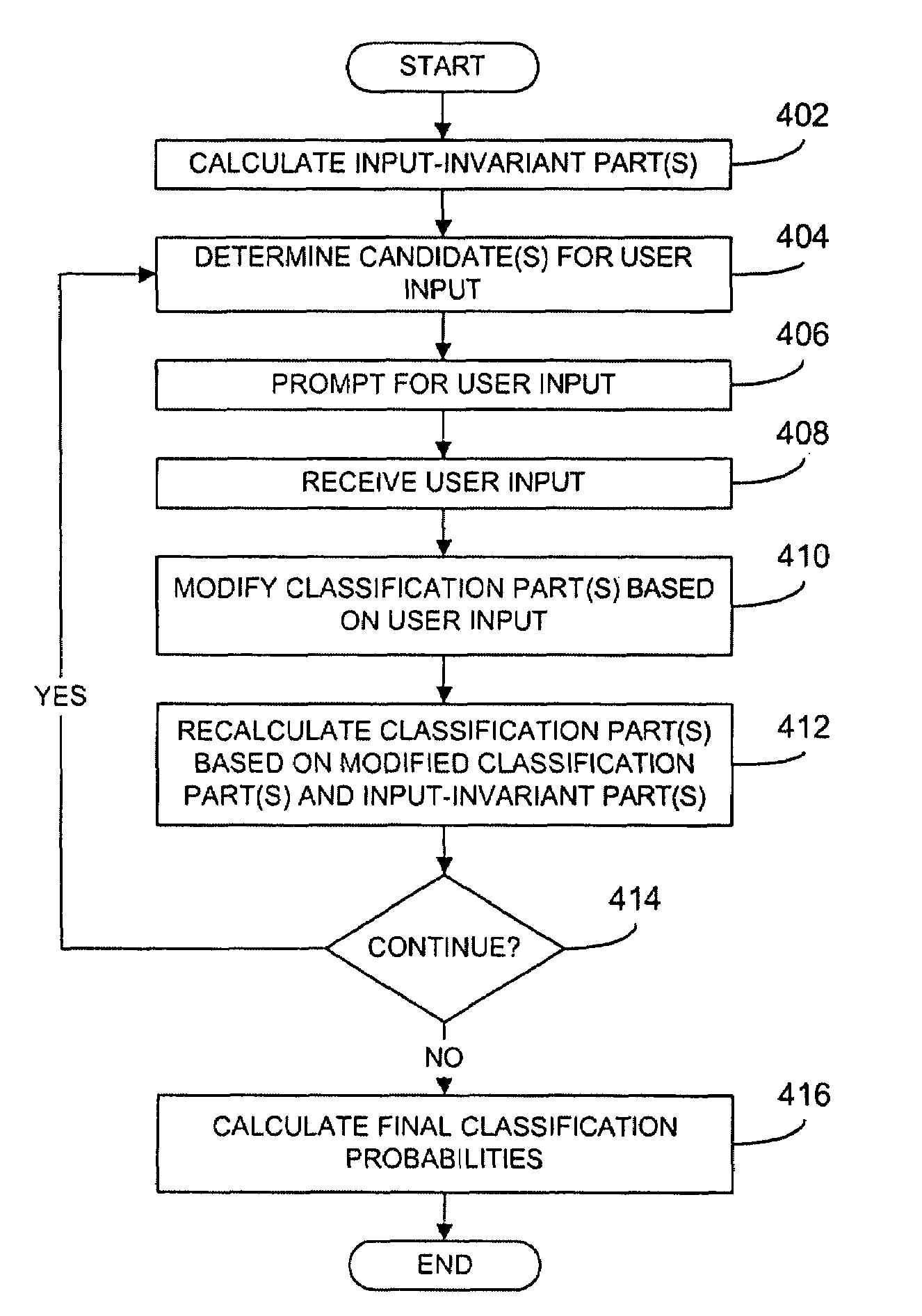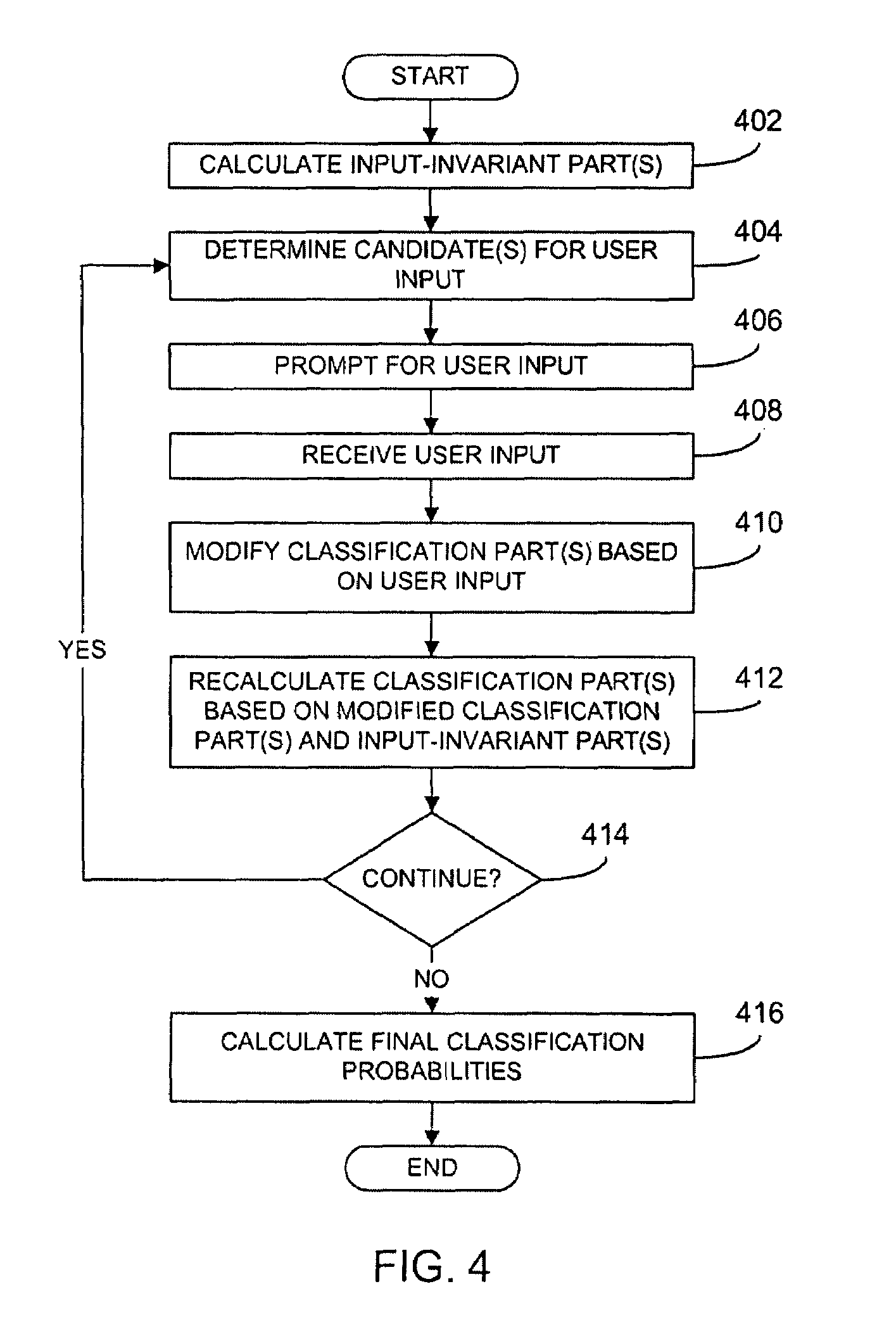Automated classification algorithm comprising at least one input-invariant part
a technology of input-invariant parts and automatic classification, applied in the field of classification algorithms, can solve the problems of high complexity, input-dependent, user-intensive time-consuming, etc., and achieve the effect of dramatically reducing the wait time between user feedback iterations
- Summary
- Abstract
- Description
- Claims
- Application Information
AI Technical Summary
Benefits of technology
Problems solved by technology
Method used
Image
Examples
Embodiment Construction
[0014]Referring now to FIG. 1, high-level processing in accordance with one embodiment is illustrated in block diagram form. In particular, classifiable electronic data 104 is provided as input to a classification process 102. Using techniques described in further detail below, the classification process 102 provides, in this case, the desired extracted information 108 based in part upon user input or feedback 106. In a presently preferred embodiment, the processing of the various embodiments of the present invention, as exemplified in FIG. 1, is carried out using one or more suitably programmed computers or equivalents thereof.
[0015]The classifiable electronic data 104 may comprise any kind of electronically-represented data that may be operated upon by an automated classification algorithm. For example, the data 104 may comprise virtually any digitally represented text, audio, video, still images, etc. possessing attributes that may be identified, thereby allowing them to be opera...
PUM
 Login to View More
Login to View More Abstract
Description
Claims
Application Information
 Login to View More
Login to View More - R&D
- Intellectual Property
- Life Sciences
- Materials
- Tech Scout
- Unparalleled Data Quality
- Higher Quality Content
- 60% Fewer Hallucinations
Browse by: Latest US Patents, China's latest patents, Technical Efficacy Thesaurus, Application Domain, Technology Topic, Popular Technical Reports.
© 2025 PatSnap. All rights reserved.Legal|Privacy policy|Modern Slavery Act Transparency Statement|Sitemap|About US| Contact US: help@patsnap.com



